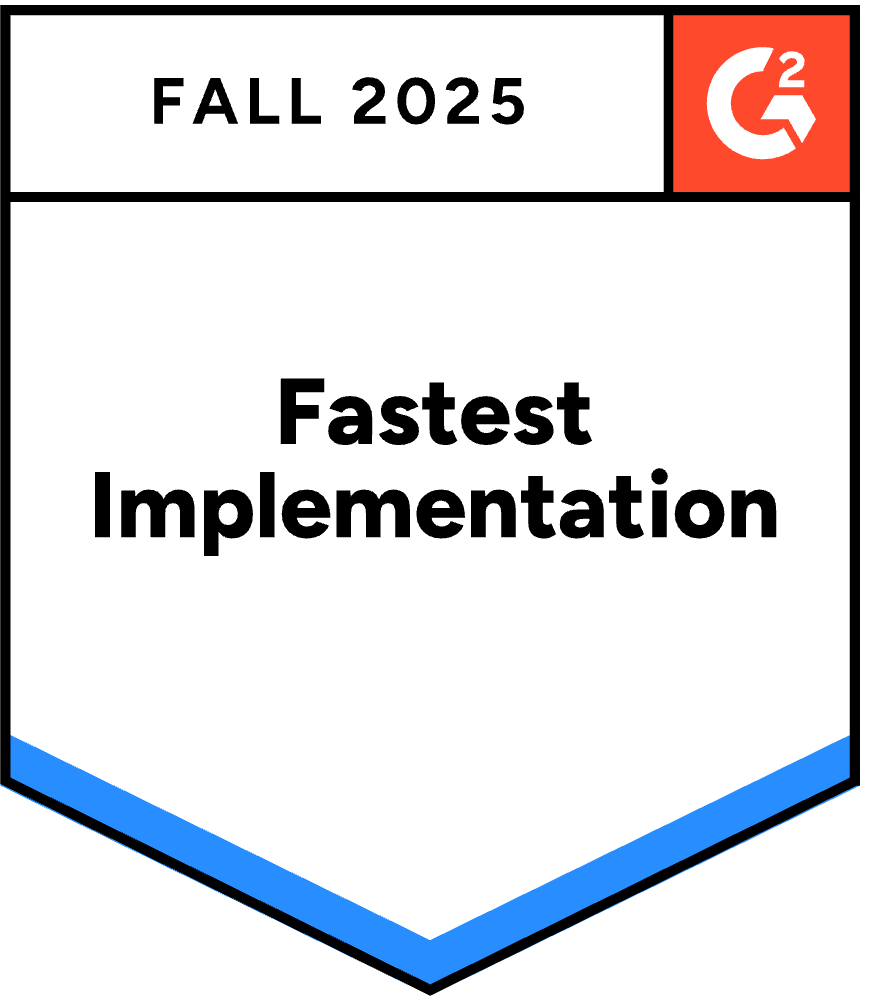These performance killers are silently destroying your ColdFusion applications—here’s how our experts use FusionReactor to identify and eliminate them quickly
Your ColdFusion application is running. Users can access it. Everything seems fine on the surface. But underneath, silent performance killers are slowly degrading your system, consuming resources, and setting you up for catastrophic failures during peak usage.
These aren’t obvious problems that crash your servers or throw error messages. They’re insidious issues that gradually steal performance, frustrate users, and eventually force expensive emergency fixes when you can least afford downtime.
In our 15+ years of ColdFusion performance consulting, we have consistently observed the same critical issues recurring across various industries and application types. What makes these problems particularly dangerous is that traditional monitoring approaches miss them entirely, while FusionReactor’s CF-specific diagnostics reveal them immediately.
Here are the five most critical performance destroyers we encounter—and why you need expert intervention to eliminate them:
1. Memory Leaks That Slowly Kill Your Applications
The Silent Server Killer
Your ColdFusion server starts the day running smoothly. By afternoon, response times are sluggish. By evening, you’re seeing OutOfMemory errors and considering a restart. Sound familiar?
Memory leaks in session and application scope management don’t announce themselves with dramatic crashes. Instead, they quietly consume your server’s resources over hours, days, or weeks until your application becomes unusably slow.
Warning Signs Your Team Might Miss:
- Performance that mysteriously degrades over time
- Server restarts that temporarily “fix” everything
- Garbage collection events that happen more frequently
- Memory usage that never decreases, only grows
Why This Requires Expert Diagnosis
Generic monitoring tools display memory usage graphs, but they cannot identify which specific ColdFusion objects are causing the leak or how your application’s unique architecture contributes to the problem.
Our consultants use FusionReactor’s advanced memory profiling to pinpoint exactly where memory is being allocated but never released. More importantly, we understand the ColdFusion-specific patterns that create these leaks and how to eliminate them permanently.
Typical Results: 40-70% reduction in memory consumption, elimination of memory-related crashes, stable performance regardless of uptime.
2. Database Connection Disasters Waiting to Happen
The Hidden Scalability Ceiling
Your application works perfectly for 10 concurrent users. At 20 users, you begin to experience occasional database timeouts. At 50 users, your system becomes unusable with “connection unavailable” errors.
The problem isn’t your database—it’s how your ColdFusion application manages database connections. Connection pool exhaustion and inefficient connection usage patterns create artificial scalability limits that have nothing to do with your actual server capacity.
Symptoms That Indicate Connection Problems:
- Intermittent database errors that seem random
- Performance that doesn’t scale with increased traffic
- Applications that work in development but struggle in production
- Database timeout errors during normal business hours
Why Standard Solutions Fail
Most teams try to solve this by increasing connection pool sizes, which only delays the problem and wastes database resources. The real issue lies in how connections are acquired, held, and released—patterns that require ColdFusion-specific expertise to identify and optimize.
Our consultants utilize FusionReactor’s database monitoring to reveal connection usage patterns, identify queries that hold connections unnecessarily, and implement optimization strategies that significantly improve your application’s scalability.
Typical Results: 50-80% reduction in database timeout errors, ability to handle 3-5x more concurrent users, elimination of connection pool exhaustion.
3. Thread Contention That Destroys Peak Performance
The Concurrency Killer
Your server has ample CPU and memory resources available, but performance still degrades exponentially as traffic increases. Users experience inconsistent response times—some requests are fast, others inexplicably slow.
Thread contention occurs when multiple requests compete for the same resources, causing some to wait unnecessarily. In ColdFusion environments, this often manifests as excellent performance during low traffic but severe degradation during peak usage, even when server resources appear underutilized.
Signs You’re Hitting Thread Limits:
- Good performance with few users, terrible with many
- Response times that vary wildly for identical operations
- Server resources that seem underutilized despite poor performance
- Requests that appear to “hang” during busy periods
Why This Requires ColdFusion Expertise
Thread contention in CFML applications exhibits unique characteristics that differ significantly from those of other platforms. The solutions require a deep understanding of ColdFusion’s threading model, request processing architecture, and how CF applications interact with the underlying JVM.
Our experts use FusionReactor’s thread analysis capabilities to identify blocking operations, synchronization bottlenecks, and resource access patterns that create unnecessary contention. We then implement solutions that allow your applications to scale smoothly regardless of concurrent user load.
Typical Results: 70-90% improvement in concurrent user capacity, consistent response times under load, elimination of request timeout issues.
4. Database Integration Patterns That Multiply Performance Problems
The Exponential Performance Tax
Your individual database queries run quickly when tested in isolation, but your application still feels sluggish. You’re experiencing the compound effect of inefficient database integration patterns that work fine during development but create massive overhead in production.
These problems often stem from ORM misconfigurations, N+1 query patterns, or suboptimal caching strategies that cause your application to execute far more database operations than necessary.
Hidden Database Performance Destroyers:
- Queries that run inside loops, multiplying database load
- ORM configurations that generate inefficient SQL behind the scenes
- Repeated queries for the same data within single requests
- Caching strategies that interfere with each other
Why Generic Database Monitoring Isn’t Enough
Standard database monitoring reveals slow queries, but it doesn’t identify ColdFusion-specific patterns that lead to inefficient database interactions. You need expertise in both CF application architecture and database optimization to effectively identify and resolve these issues.
Our consultants utilize FusionReactor’s comprehensive SQL profiling to map the relationship between your CFML code and actual database operations, revealing optimization opportunities that other approaches may overlook entirely.
Typical Results: 60-85% reduction in database query execution time, 40-70% reduction in total database calls, and dramatically improved application responsiveness.
5. JVM Configuration That Limits Everything Else
The Foundation Performance Problem
ColdFusion runs on the Java Virtual Machine, and JVM configuration has a profound impact on every aspect of your application’s performance. Many organizations use default settings or configurations copied from generic Java applications, which often miss critical optimizations specific to ColdFusion workloads.
Poor JVM configuration doesn’t just affect one aspect of performance—it creates a ceiling that limits the effectiveness of every other optimization effort.
Signs of Suboptimal JVM Configuration:
- Frequent garbage collection pauses that impact user experience
- Inconsistent performance that varies unpredictably
- Memory errors despite apparently adequate heap space
- Performance problems that seem to have no clear cause
Why ColdFusion JVM Tuning Is Specialized
ColdFusion applications have unique memory allocation patterns, threading characteristics, and performance requirements that differ significantly from generic Java applications. Optimal JVM configuration for CF requires understanding both JVM internals and ColdFusion-specific behavior patterns.
Our experts use FusionReactor’s JVM monitoring to analyze garbage collection patterns, memory allocation behavior, and thread utilization specific to your CF applications. We then configure JVM settings that maximize performance for your specific workload characteristics.
Typical Results: 50-80% reduction in garbage collection pause times, 30-60% improvement in overall application responsiveness, elimination of JVM-related stability issues.
Why These Issues Require Expert Consultancy
ColdFusion-Specific Expertise Is Critical
Each of these performance problems has unique characteristics in ColdFusion environments that require specialized knowledge to diagnose and resolve effectively. Generic performance advice or monitoring tools often overlook the CF-specific patterns that contribute to these issues.
Our consultants bring 20+ years of accumulated knowledge about what works—and what doesn’t—for ColdFusion performance optimization across healthcare, finance, government, and manufacturing environments.
FusionReactor Provides the Diagnostic Power
While other monitoring tools provide generic metrics, FusionReactor’s ColdFusion-specific capabilities reveal performance patterns that would remain hidden with standard APM solutions. Our consultants use this detailed visibility to diagnose problems quickly and implement solutions with measurable results.
Systematic Problem Resolution
We don’t guess at solutions or apply generic performance advice. Every optimization is based on specific data from your environment, validated through testing, and measured for ongoing impact using FusionReactor’s comprehensive monitoring capabilities.
The Cost of Leaving These Problems Unresolved
Performance Problems Compound Over Time
These issues don’t remain static—they worsen as your applications grow, traffic increases, and business requirements evolve. What starts as minor performance degradation becomes system instability, user frustration, and eventually emergency fixes during critical business periods.
Your Team’s Time Is Valuable
Senior developers spending 20-40% of their time on performance troubleshooting aren’t building features, improving user experience, or driving business value. The opportunity cost of DIY performance management often exceeds the investment in expert consultancy.
User Experience Impacts Business Results
Slow applications don’t just frustrate users—they impact business outcomes. Whether you’re serving patients in healthcare, processing financial transactions, or delivering citizen services, performance problems directly affect your organization’s ability to achieve its mission.
Ready to Eliminate These Performance Killers?
Don’t let these silent destroyers continue degrading your ColdFusion applications. Our consultancy team has the expertise and proven methodology to identify and eliminate these critical issues quickly and permanently.
What You Get with Our Performance Consultancy:
- Rapid problem identification using FusionReactor’s advanced CF-specific diagnostics
- Expert optimization based on 15+ years of ColdFusion performance experience
- Measurable results are typically delivered within 6-8 weeks
- Knowledge transfer that builds your team’s capabilities for ongoing success
- Long-term partnership for sustained performance excellence
Talk to our experts
In just two weeks, our consultants will use FusionReactor to analyze your environment and provide:
- Identification of critical performance issues that may be impacting your applications
- Prioritized optimization recommendations with expected business impact
- Strategic roadmap for systematic performance improvement
- ROI projections for consultancy investment vs. continued performance problems
Don’t wait for these performance killers to cause a crisis. Contact our ColdFusion consultancy experts today and transform your struggling applications into high-performance business assets.











